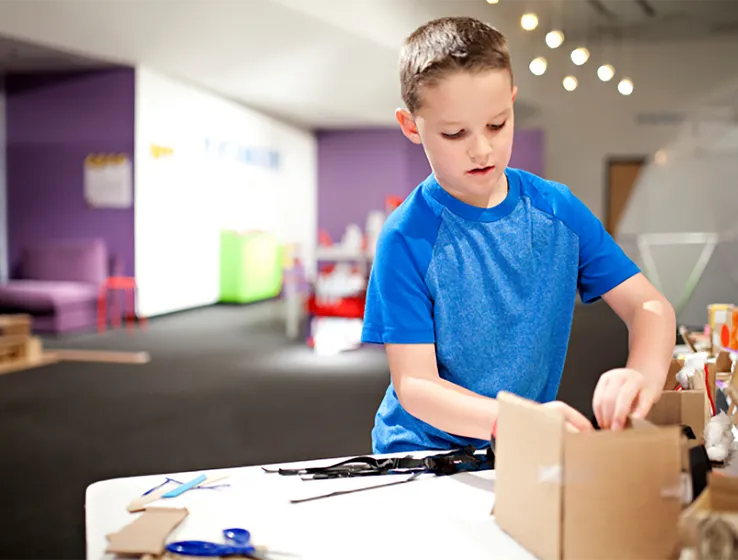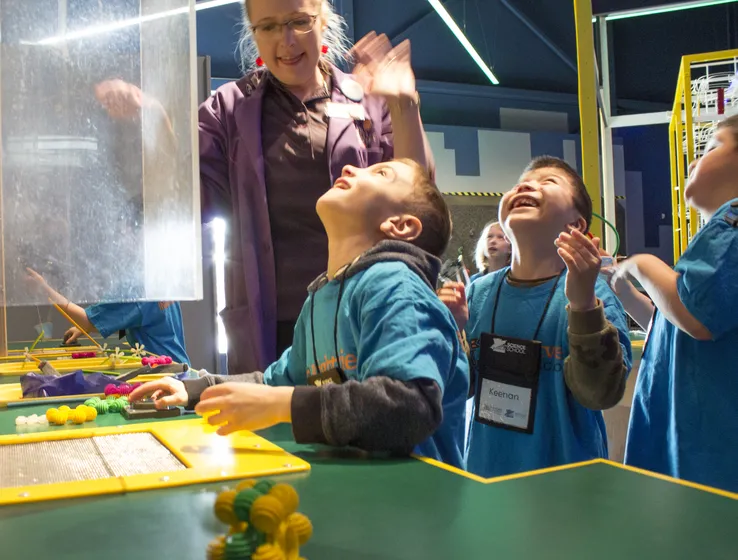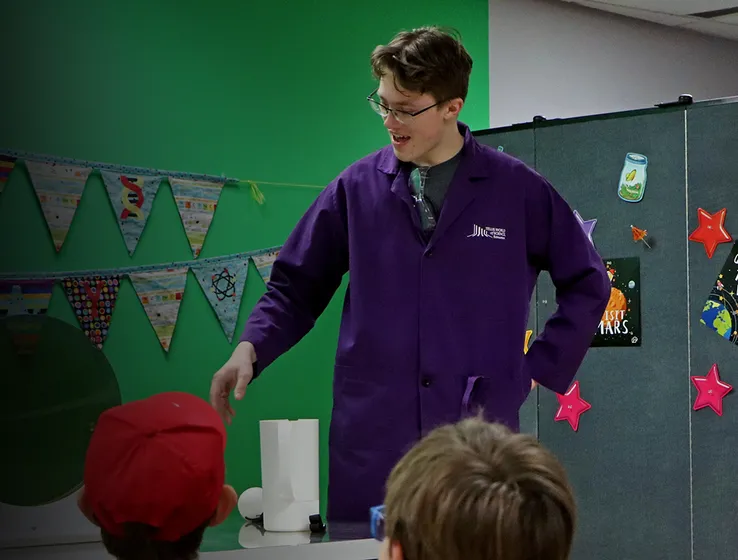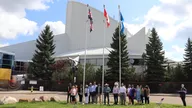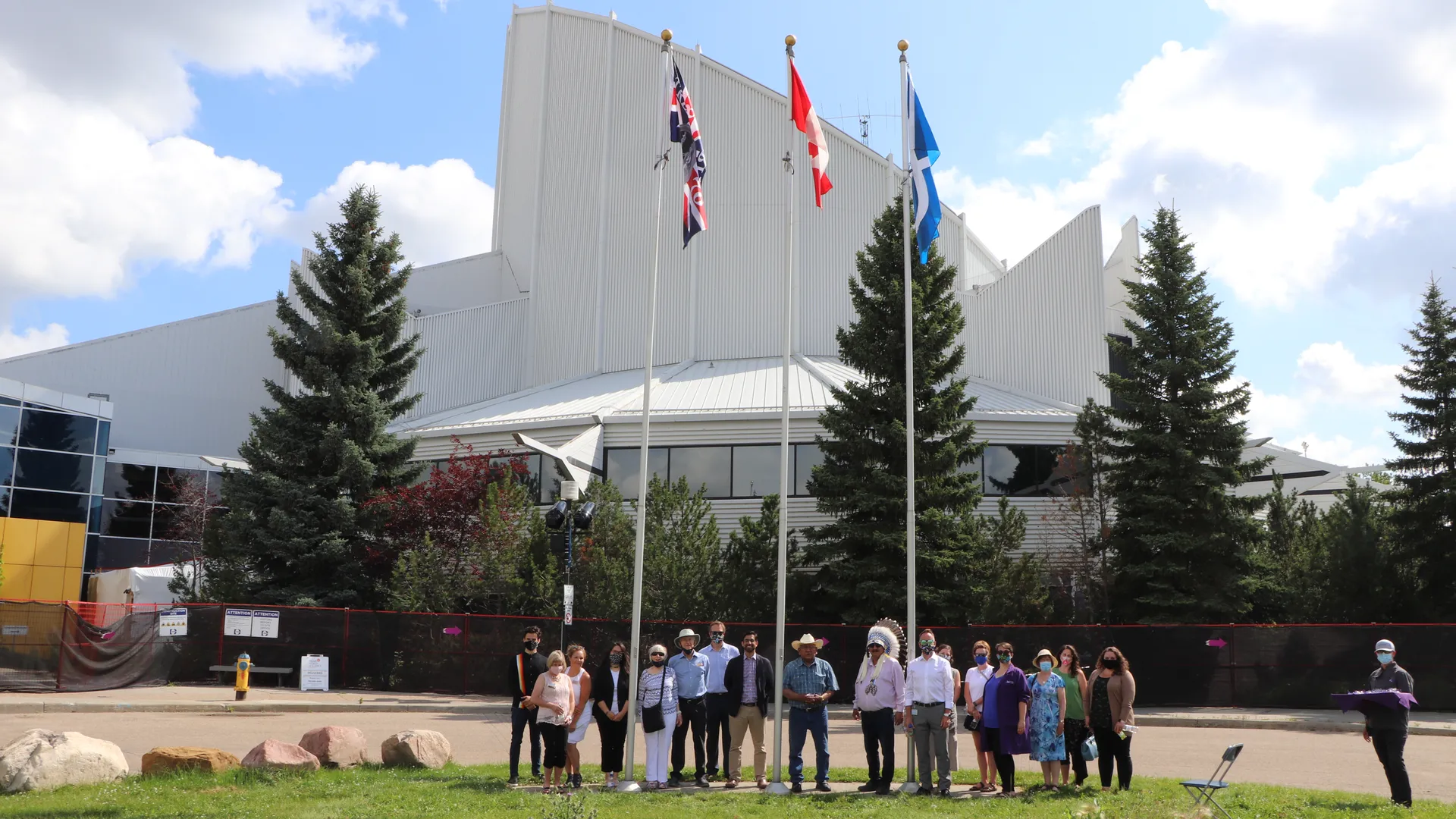National Indigenous History Month: Introduction to Understanding Protocol
Posted:
For National Indigenous History Month, we will be sharing a few blogs about Indigenous culture. We encourage you to take the time to learn about Indigenous history and current events.
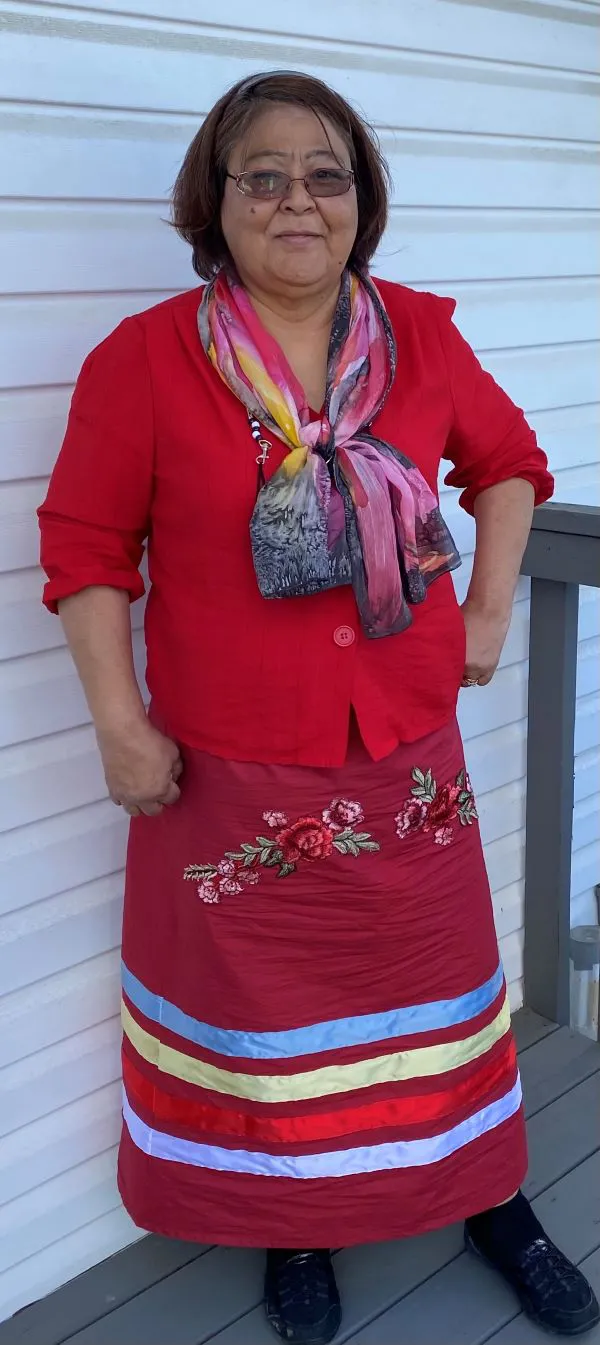
Lynn Lush wearing her ribbon dress.
Meet Lynn Lush, she’s the Indigenous Land Based Learning Navigator at TELUS World of Science – Edmonton and the author of this blog.
Lynn Lush (whose Indigenous name is Blue Thunderbird woman - ozhaawashko binesi ikwe) is originally from Manitoba. Lynn grew up in British Columbia with her adopted family. She is a survivor of the residential school system and the Sixties Scoop. At age 13, she started a journey to reclaim her traditional knowledge. She was taught by Elder Albert Lighting in Alberta, and several Elders from Manitoba, Nova Scotia, and British Columbia.
Lynn has lived in Edmonton for 10 years and is very active with Indigenous organizations. She enjoys teaching and sharing her knowledge with students and others curious about Indigenous culture. Lynn is an accomplished craftsperson and teaches how to make fish scale art, dreamcatchers, medicine pouches, ribbon skirts. She also holds traditional knowledge in healing medicines.
In this blog, Lynn will discuss a few examples of protocols in Indigenous culture.
What is a protocol?
In Indigenous cultures, we have our belief system*, value system*, and principal system*. Our cultural practices are our way of expressing those values, principals, and protecting them.
An important cultural practice is participating in protocols, which are ways of interacting with Indigenous people in a manner that respects traditional ways of being. Protocols are unique to each Indigenous culture and are a representation of a culture’s deeply held ethical system. When you follow a protocol, it is a significant sign of respect and awareness.
The protocol of offering tobacco
An example of a protocol in the nahiyawak (cree) culture is to offer tobacco and a print* as a gift to the Elder. You can also just give tobacco. However, each Indigenous nation may be slightly different in the way they use this protocol.
A gift of tobacco is a sign of respect and should be offered when asking for help, guidance, and protection from an Indigenous Elder, knowledge keeper or person. Tobacco is offered for many reasons and in many different situations such as: asking for a song, an opening prayer, a teaching, Indigenous knowledge or for advice.
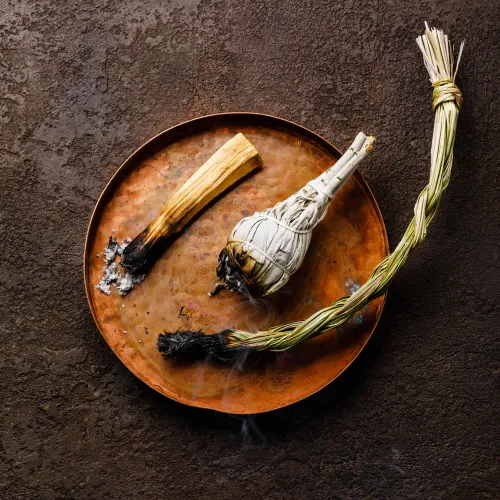
center: white sage, right: sweetgrass
The protocol of using sage or sweetgrass in a smudging ceremony
The smoke from burned sage* or sweetgrass* has a purpose of carrying thoughts and prayers to the spirit world or to the Creator. When sage or sweetgrass is used for smudging, it symbolizes the purification of your mind, body, and spirit.
During a smudging ceremony, the Elder will share a few words, then he/she will use his language to offer prayer. The Elder’s helper will go around the circle and offer the opportunity to smudge yourself; however, it is not required to participate. You can tell the Elder’s helper (oskapios) that you would like to pass by stepping back or crossing your hands or by saying “all my relations”.
More examples of protocols
The following list consists of examples of other protocols to familiarize yourself with:
- Medicines should not be handled by anyone under the influence of drugs or alcohol. You should also not smudge four days before consuming drugs or alcohol.
- Women should not smudge or be smudged with anything but sage while they are on their moon cycle.
- In some cases, an honorarium is given to an Elder for travel and other expenses.
- Never force or pressure anyone to smudge or participate in ceremonies.
Learning about protocols takes time and dedication
The protocols mentioned in this blog are just a few examples of the many protocols practiced in Indigenous culture. Protocols can also vary across Indigenous cultures. Learning about protocols is a lifelong pursuit of knowledge that requires dedication and respect. But by learning about and following protocols, you can build stronger relationships with Indigenous communities – an important step towards reconciliation and understanding.
Want to learn more about Indigenous culture? TELUS World of Science – Edmonton has put together a series of videos and activities linking western science with traditional Indigenous ways of knowing. Register for free to watch today. Stay tuned for Lynn’s next blog about smudging.
Definitions
- Belief system: Spiritual beliefs and practices as a part of “Indigenous Spirituality”.
- Value system: Indigenous knowledge that can help to meet the broader objectives of society, for instance conserving the environment, developing sustainable agriculture, and ensuring food security, while its protection encourages the maintenance of traditional practices and lifestyles.
- Principal system: Respect, humility, and tolerance are part of most Indigenous cultures’ principal systems. For example, in the fundamental laws or principles of most Indigenous societies, respect exists in healthy and balanced relationships.
- Print: A piece of cloth that is at least one metre in length.
- Sage: Used to prepare people for ceremonies and teachings. Because it is more medicinal and stronger than sweetgrass, it tends to be used more often in ceremonies. Sage is used for releasing what is troubling the mind and for removing negative energy. It is also used for cleansing homes and sacred items.
- Sweetgrass: A fragrant grass with long, satiny leaves. Also known as vanilla grass, manna grass and holy grass, a material for baskets, as well as a scent, medicine and smudge.
Related Articles


Food Chain Reactions
How Climate Change is Impacting Canada's Lakes

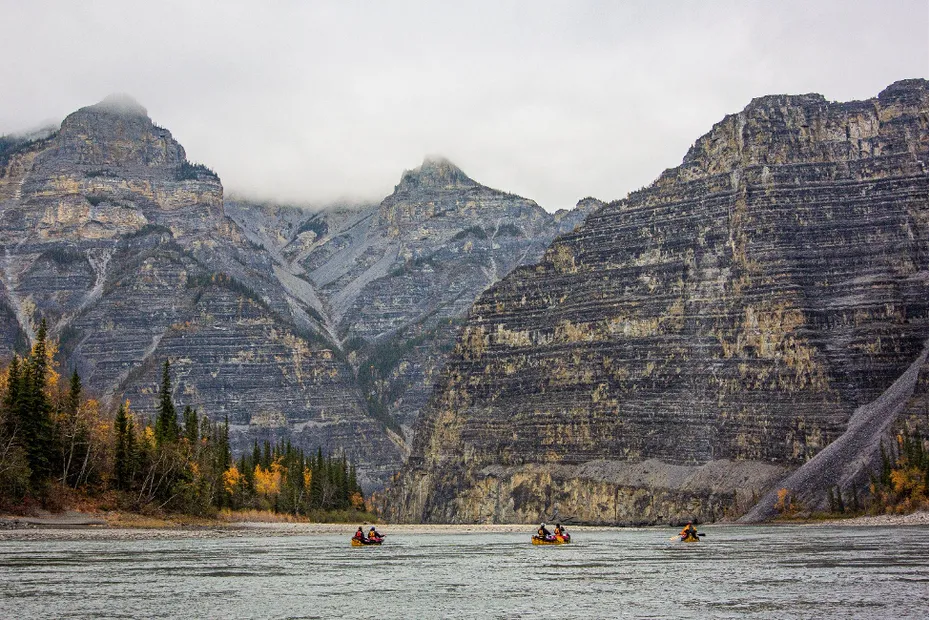
Guest post - Nahanni National Park Reserve - Kathryn Walpole
In a series of three blog posts, we are delighted to partner with Parks Canada to introduce you to three National Parks and three of the amazing women of STEM who are working together to meet the challenge of protecting these special places for present and future generations.

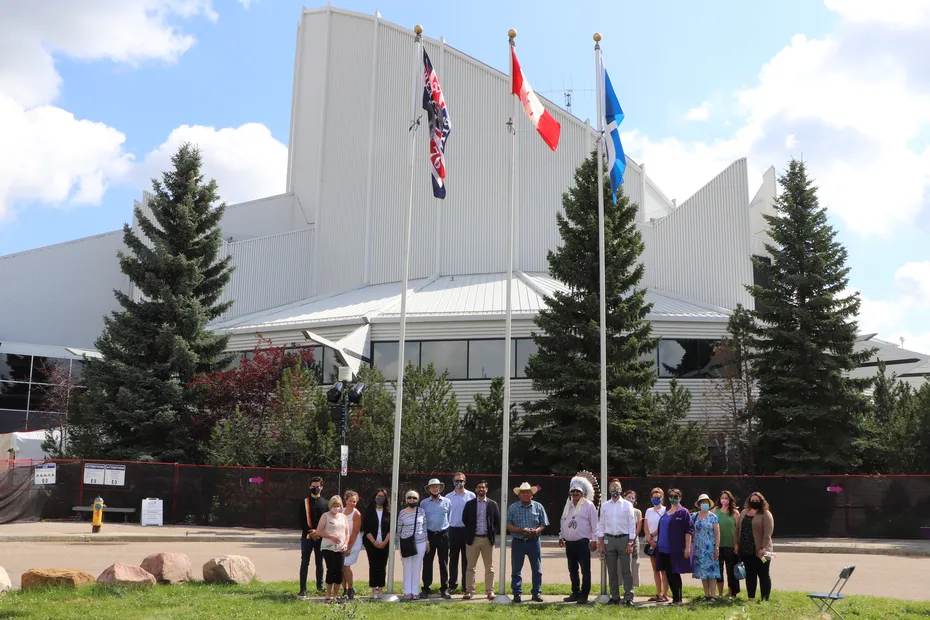
Official Smudge Ceremony
Related Articles


Food Chain Reactions
How Climate Change is Impacting Canada's Lakes


Guest post - Nahanni National Park Reserve - Kathryn Walpole
In a series of three blog posts, we are delighted to partner with Parks Canada to introduce you to three National Parks and three of the amazing women of STEM who are working together to meet the challenge of protecting these special places for present and future generations.


